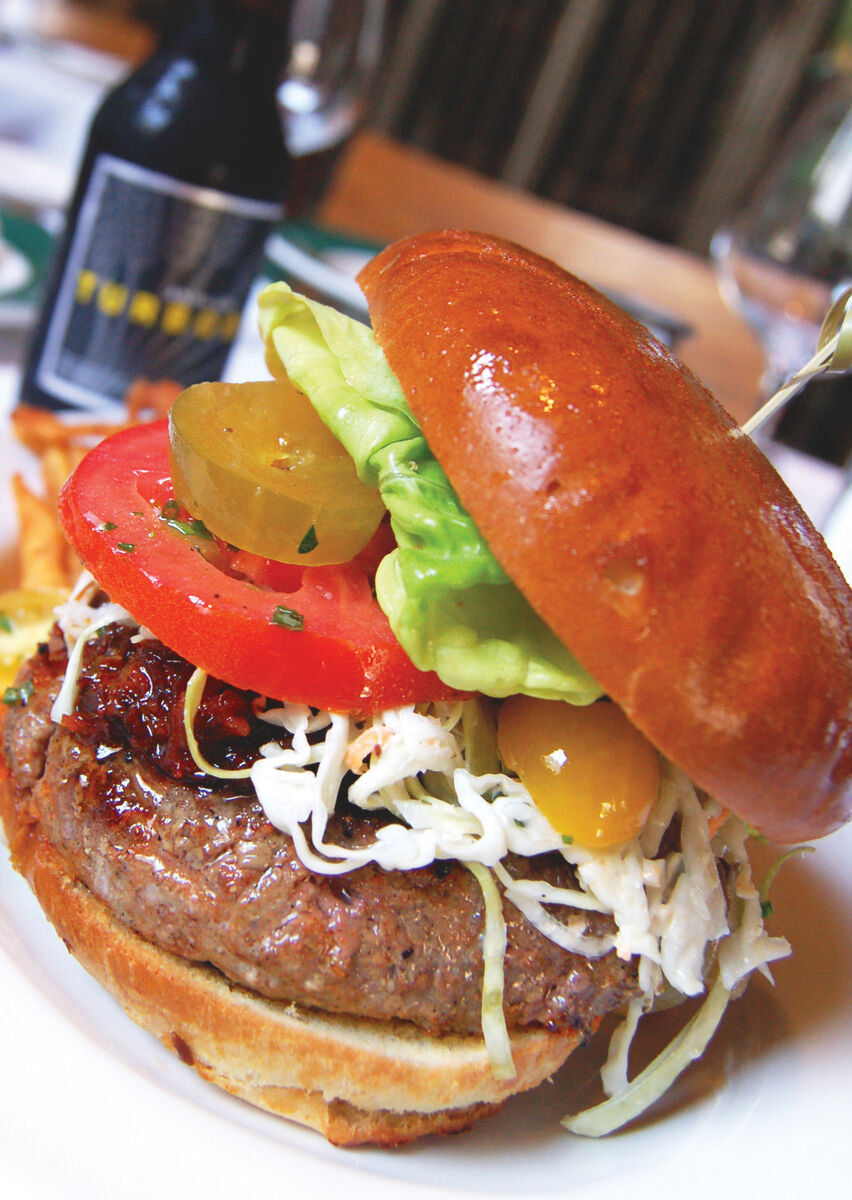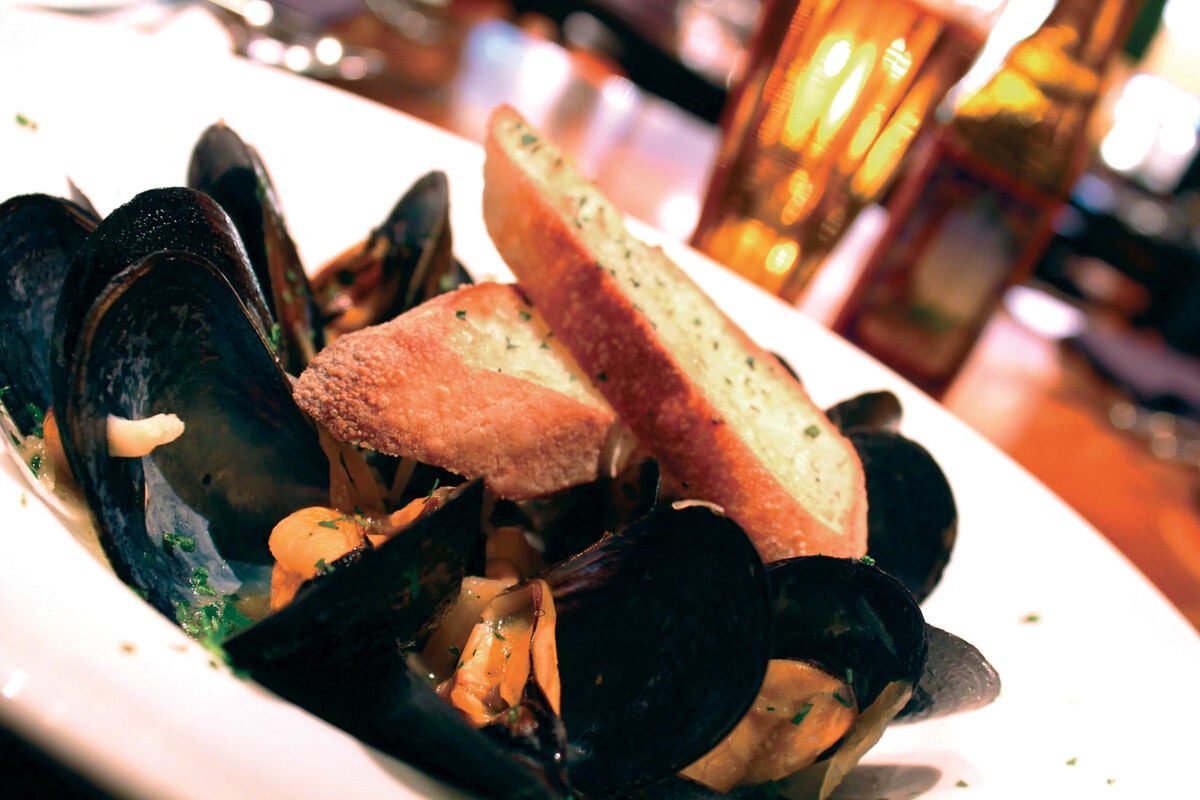Start 14-Day Trial Subscription
*No credit card required

Up a Notch With Emeril Lagasse
Like many, my introduction to celebrity chef Emeril Lagasse came via television. As the host of “The Essence of Emeril” and “Emeril Live,” Lagasse inspired scores of viewers to “kick things up a notch” in their own kitchens, myself included.
Before happening across an episode of Lagasse building an authentic New England lobster roll, I’d been a fan of food, but never felt inclined to manipulate ingredients with my own two hands. His trademark enthusiasm for cooking was so infectious it flowed through the TV screen, inoculating me with an insatiable hunger for knowledge and the desire to create my own inventive dishes.
Before I knew it, I was single-handedly causing Nielson rating spikes with my nearly non-stop Food Network viewing, gobbling up as much knowledge from cookbooks and encyclopedic food tomes as possible, wearing a groove into the blacktop between my house and the grocery store and, most importantly, diving into my kitchen with the same passionate gusto of the man who’d ignited my epicurean fire.
Another medium Lagasse introduced me to was that of beer or, more succinctly, its use as an ingredient in recipes. Thanks to him, the word Turbodog became as much a household term for me as “bam” or “pork fat rules.” Lagasse used that rich, roasty English brown ale from Louisiana’s Abita Brewing Company as the base for fried chicken beer batter, part of a braising liquid for cabbage, and a bold flavor enhancer for a wild mushroom and foie gras bisque.
Living on the West Coast, it took a while to find Turbodog, but once I did I knew exactly how to put it to use as an ingredient, as a pairing and as a refreshing kitchen quaff. (Lagasse refers to a dark roux as a “two-beer roux” since that time-consuming thickening agent is usually ready in the span it takes to consume two beers.) These lessons put me far ahead of the curve in the area of beer-infused cuisine, something that barely existed in the late-1990’s, but has evolved into a vibrant gastronomic niche… and my bread and butter.
Lagasse’s insight about the use of beer in cooking is one of the many energetic undertakings that have helped make him a culinary icon due the breadth of his vision in the kitchen. He’s done over 2,000 shows on the Food Network, has written 16 cookbooks and is the food correspondent on “Good Morning America,” where he hosts cooking contests with titles such as the “Pie of Emeril’s Eye” and “Mother’s Day Breakfast In Bed.”
In 2007, I shared the New York City set of “Emeril Live” with my culinary idol. The impetus for that teaming was a recipe I’d submitted to a contest on the Food Network: bacon-wrapped filet mignon stuffed with crab and shiitake mushrooms served with diver scallops in Peruvian purple potato nets and champagne béarnaise sauce. After watching Lagasse prepare my dish on-air, I gave him a book of over 200 of my original recipes along with a note thanking him for helping me to unearth my passion and proficiency for cooking.
Much has transpired for both of us since that meeting. Lagasse has aligned with Martha Stewart Omnimedia and has continued to reach aspiring home cooks with new cookbooks and TV shows including “Emeril’s Table,” “Fresh Food Fast” and “The Originals with Emeril.”
I am now a beer and food journalist, Zagat editor and cookbook consultant. Meanwhile, in relation to each other, we remain the same—he the teacher and I the student. It is a tribute to the growth of demand for Emeril’s culinary consultation that this time we exchanged our thoughts on the current craft beer and pairing scene via email.

Lagasse thinks local, pairing a saucy burger with Turbodog, a NOLA-style English brown ale.
When asked about the astronomic rise of craft beer over the past several years, he considered the brewery nearest to him in terms of geography and sentiment. “When someone makes a quality local product like Abita, it is only a matter of time before it catches on,” said Lagasse. “I think it has a lot to do with folks being more educated and exposed. When people understand and know more, they can appreciate the diversity of a product.”
With an increase in craft beer demand among consumers there’s been an increase in the presence of the industry’s wares in restaurants. But it’s not just hip gastropubs or bar and grills that are leaning more heavily on the tap-driven side of their business. White linens and gourmet operations like Lagasse’s eateries in New Orleans, Las Vegas, Charlotte, Orlando and Bethlehem, Pennsylvania are also upping the number of beer options on the menu.
Rather than simply pouring artisanal beers, Lagasse and his kitchen colleagues are celebrating the breweries that forge them. “We like to host beer dinners when many of the breweries are launching a new beer or a seasonal offering,” he said. “Over the past few years, we’ve done quite a few seasonal launch and pairings with craft breweries such as Abita, Lazy Magnolia Brewing Company from Mississippi and Heiner Brau.”
When asked about standout events, he cited a beer pairing dinner at his upscale Emeril’s Delmonico in New Orleans that focused on the beers of Heiner Brau, a microbrewery in Covington, Louisiana specializing in Germanic styles. Because of the heritage the brewer gravitates toward, the menu for the dinner was filled with classic German flavors.
That meal was book-ended by a pair of rather familiar dishes—beer-braised bratwurst, and grilled chestnut-fed pork chop with spaetzle (small, pellet-like, Polish-style dumplings) and bacon-braised Brussels sprouts. Heavy on the pork fat and ideally suited for malty German-style beers, they were paired with Heiner Brau’s Festbier Oktoberfest and Maerzen.
It was during the second and third courses that Lagasse and his chef de cuisine went outside the box, coming up with pairings for dishes much more delicate in flavor and geared toward Louisiana sensibilities. The first was a simple cucumber salad Lagasse coupled with Heiner Brau’s Covington Brewhouse Pontchartrain Pilsner to match the cleanness of the dish while amplifying the acidity of its vinaigrette dressing via the lager’s sharp hop character. That was followed by rainbow trout married with a Kolsch sharing a similar flavor profile to the white wine the fish was poached in.
“I think it makes sense to approach beer pairings as a creative medium,” said Lagasse. “There are so many flavor profiles and beer is so versatile that it is very easy to match to cuisines across the spectrum.”
I took the opportunity in my list of questions to ask the chef for his beer-and-food-pairing modus operandi. He replied by sharing the proteins and ingredients he feels serve as the most logical foundations for recipes designed to go with different styles of beer.
For lighter beers like a pilsner or kolsch, he goes with shellfish. Bitter, hop-driven pale ales and India pale ales call for ingredients similarly rife with herbaceous notes. Malty beers ranging from bready to semi-sweet (amber ales, marzens, Belgian dubbels) call for something with weight like beef, fatty pork or game meat. For high-alcohol brews, specifically those aged in spirit-soaked oak barrels, he sticks with the standby for brandies and whiskies—a thick, juicy steak. And for Turbodog, an English brown ale, as well as for porters and stouts, it’s all about the chocolate.
It’s not surprising pairable foods come to mind when Lagasse tastes a flavorful beer, but edibles don’t always come into the equation. In fact, he is quite enamored with beer tastings, where the merits of each beverage are examined and appreciated on their own.
For those special dining events, the chef de cuisine for the restaurant hosting a dinner will conduct a tasting prior to the creation of the menu to determine the exact flavor profiles for each course. “Beer pairings are becoming much more significant at my restaurants,” said Lagasse. “Our bar managers have a tremendous understanding of and appreciation for the craft of beer.” When putting together a tasting, as with preparing a grand feast, quality of ingredients is key. As such, Lagasse cites the significance of temperature. When he or his staff taste beers prior to a beer dinner, the tasting is done with the beers at room temperature to evoke all of the nuances.

Shellfish prompts a call for a pilsner or kolsch.
“The approach to a beer tasting is very similar to a wine pairing. With beer as with wine, the colder the beverage is, the less flavor nuances you get out of it. There are more varied flavors when it is at room temperature.”
But once the initial flavor search is done, during the beer dinners or in the restaurants the beers are served at the brewers’ recommended temperatures since optimal conditions are essential for enjoying food and drink to the greatest extent. It’s a context the chef and famed restaurateur is intimately familiar with. But Lagasse also understands the more universal context of beer.
“Very often, when chefs want to relax with a beverage, they choose a beer. It can be as simple or as complex as they want,” said Lagasse. “Beer is extremely approachable and evokes off-time. When you visit a chef at home, the first thing offered you is a bottle of beer…and it is always welcomed.”
So go the varied and informative perspectives on beer from one of the country’s most influential gastronomes. Nearly fifteen years after I took my first lesson, I’m still learning from Lagasse. Sharing beer and culinary knowledge—this fervent food enthusiast and beerophile is still enjoying every minute under his tutelage.
Seafood Boudin
(Recipes courtesy Emeril Lagasse, courtesy Martha Stewart Living Omnimedia, Inc.)

Ingredients
1 pound crawfish tails
1 pound peeled and de-veined shrimp
1/3 cup minced shallots
1/2 cup heavy cream
1/4 cup brandy
1 1/2 teaspoons salt
1/2 teaspoon cayenne
1/4 teaspoon freshly ground white pepper
3 cups cooked medium-grain rice
2 tablespoons finely chopped parsley
1 1/2-inch diameter casings, about 4 feet in length
1/4 teaspoon black peppercorns
1 yellow onion, quartered
4 lemon slices
1 bay leaf
4 tablespoons butter
Mustard Cream Sauce
Preparation
In a food processor, combine the crawfish, shrimp, shallots, cream, brandy, salt, cayenne, and pepper. Turn the mixture into a mixing bowl. Stir in the rice and parsley.
Using the feeding tube on a mixer, stuff the seafood mixture into the casings to make 3-inch links. Bring a large saucepan of salted water up to a boil. Add the peppercorns, onion, lemon slices and bay leaf and cook for 2 minutes. Add the sausage and poach until firm to the touch and plump, about 5 minutes. Remove from the water and let cool. In a large saute pan, over medium heat, melt the butter. Pan-fry the sausage for 3 to 4 minutes on each side. Remove from the pan and keep warm.
To serve, spoon the sauce in the center of each plate, and top with sausages. Serve immediately with Mustard Cream Sauce.
Yield: 8 servings
Mustard Cream Sauce
Ingredients
1 cup dry white wine
1/4 cup chopped shallots
2 cups whipping cream
1/4 cup Dijon mustard
1/2 teaspoon salt
1/8 teaspoon cayenne
2 teaspoons chopped fresh tarragon
Preparation
Combine the wine and shallots in a small heavy saucepan. Bring to a boil and cook until reduced to 1/3 cup, about 6 minutes. Whisk in the cream, mustard, salt, and cayenne. Boil until thickened by 50 percent, about 5 minutes. Remove from heat, stir in the tarragon, and adjust seasoning, to taste. Serve immediately.
Yield: about 1 1/4 cups
Recommended Beer Pairings:
American-Style Pale Ale, American-Style Amber




